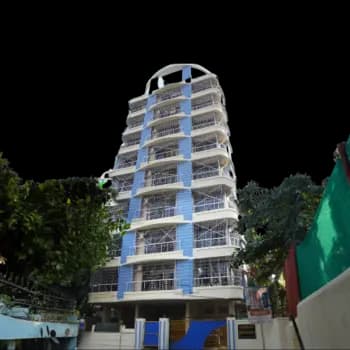Conversion Disorder
Conversion Disorder also referred to as Functional Neurological Symptom Disorder, is a mental disorder in which psychological stress or trauma leads to physical symptoms without a clear medical cause. Symptoms can include paralysis, seizures, or loss of sensation. Severe impairment in the quality of life or function in which these symptoms exist can occur. The disorder often leaves the patient baffled and in great emotional distress and family tragedy; their signs or symptoms closely parallel those experienced with a neurological or medical condition.
Although its exact cause has yet to be scientifically determined, certain predisposition factors include stress, trauma, and pre-existing emotional or psychological disorders. For diagnosis and subsequent treatment to be prompt, there's a need for a clear understanding of the condition and recognition of its existence.
Types of Conversion Disorder
These are disorders or functional neurological symptom disorders, and symptoms vary across different levels of bodily functions. Some sub-types can be distinguished:
Motor Symptoms
These include disturbances in voluntary muscle movements, affecting mobility and coordination. Common motor symptoms include:
- Complete or partial loss of strength in limbs, hampering mobility, such as walking or picking objects up.
- Irresistible jerking or spasms that may resemble neurological disorders when, after medical checks, there is no found cause.
Sensory Symptoms
These constitute disturbances in sensation such as touch, vision, and hearing.
- Numbness or lack of sensation in specific areas of the body contrary to usual nerve damage patterns.
- Either blurred or double vision, temporary blindness, or loss of hearing.
Non-Epileptic Seizures (NES)
Although appearing to the outward observer to resemble epileptic seizures, these arise as a psychological manifestation of distress, rather than abnormal brain activities. Diagnosis basically relies on EEG to confirm that true epilepsy is not involved.
Speech limitations
These symptoms affect exchanges of communication, in most cases leading to:
- Slurred Speech: Identification and slow way of talking resembling one stroke-like condition.
- Loss of Voice: Loss of speech with no real physiological variable without relating it with straining.
Causes of Conversion Disorder
Conversion disorders are a group of conditions, which manifest psychological distress as physical ones. Although the exact cause is still unknown, the body's mental, emotional, social, and biological interactions appear to bring about it. To appreciate this condition fully, the most common causes are summarized here.
Psychological Stress or Trauma
The other major cause of Conversion Disorder has to do with emotional stress or past trauma. Untreated trauma experiences, such as childhood abuse, violence, or severe changes in social situations later in life, may result in unprocessed emotions. If similar stress resurfaces long after the trauma takes place, these psychological scars can translate into physical symptoms. It is a method of coping for the body to convert emotional distress into physical responses.
Other Underlying Mental Conditions
People with pre-existing mental health conditions are more likely to develop Conversion Disorder.
- Anxiety: Chronic worry could lead to somatic symptoms like tremors or numbness.
- Depression: Physical symptoms such as fatigue or motor disturbances simulating neurological disorders could develop in individuals with depression.
- PTSD: An individual suffering from PTSD may develop paralysis or other symptoms resembling seizures.
Biological Factors
Disruptions in how the brain functions are thought to cause Conversion Disorder. Some studies have suggested altered brain activity in regions related to motor control, sensory perception, and emotions among patients with conversion disorder. This altered brain activity may cause sensory or motor signals to be misinterpreted, leading patients to develop physical symptoms.
History
Genetics and family dynamics can also be a contributing factor. When there is a family tendency toward mental illnesses such as anxiety or depression, there could be increased susceptibility. Additionally, one could learn to mimic the behaviour of family members who demonstrate psychological conditions by using physical symptoms to express psychic distress.
The foregoing gives insight into what makes Conversion Disorders a complex multifaceted set of conditions, thereby giving credence to addressing Conversion Disorder from psychological and neurological perspectives in its management.
Signs and Symptoms
Signs and symptoms of conversion disorder vary widely and may offer an impression of neurological or medical conditions that arise without a pronounced, medical basis for them. They often occur suddenly around the time of the start of a bout of stress or traumatic event. Common Symptoms Include:
- Loss of Coordination or Balance: Such patients may have difficulty walking or maintaining balance; these problems seem to resemble neurological disorders.
- Unexplained Weakness or Paralysis: Sudden weakness or paralysis involving particular limbs is characterized in this way.
- Problems with Vision: Some declare a sudden onset of blindness, double vision or some other visual symptoms without any confirmed eye disease.
- Non-Epileptic Seizures: These episodes resemble epileptic seizures in that they might be associated with convulsions or loss of consciousness, but there is no seizure activity during EEG.
- Difficulty Swallowing Or A Lump In The Throat A Sensation: Such patients might feel they can no longer swallow or feel some sort of lump in the throat which causes them extreme distress.
These symptoms often disrupt daily life and may induce anxiety by their sudden, unexplained emergence.
Diagnosis
Diagnosis of conversion disorder is carried out through extensive examination to rule out other likely medical or neurologic diseases. It generally involves several basic steps:
1. Medical History Review
A very detailed review of the medical and psychological history of the individual is a first step. This helps in tracking earlier illnesses, major traumas, or psychological stressors that may have been ascribed to the genesis of symptoms in the individual.
2. Physical and Neurological Exams
The physical and neurological examination is performed to assess physical symptoms. These examinations allow for the exclusion of any possible underlying medical or neurological explanation for the presenting symptoms.
3. Psychiatric Assessment
The mental health professional assesses the psychological well-being of the individual to ascertain whether the physical symptoms are caused by stress, trauma, or other mental health disorders, such as anxiety or depression.
4. Specialized Tests
Tests such as EEG (for abnormal brain activity), MRIs, or CT scans may be ordered by doctors to rule out such neurological disorders. These tests help ensure that such conditions as stroke, multiple sclerosis, or epilepsy are not responsible for the symptoms.
A diagnosis of Conversion Disorder is made when there is no medical cause for the symptoms and the symptoms closely correlate with psychological factors. Detection and confirmation of the diagnosis must be rapid and valid for the treatment to commence.
Treatment Options
Management of Conversion Disorder includes relieving symptoms, treating physical symptoms caused by underlying psychological factors, and improving a person's quality of life. A multidisciplinary approach is frequently used, including the following avenues:
1. Psychotherapy
Psychotherapeutic care, particularly Cognitive Behavioral Therapy (CBT), is the foundation for dealing with this disorder. CBT teaches the patient to cope better with stressors through the abstraction of negative thought processes. Trauma-focused therapy may also be of value for patients who have experienced trauma.
2. Physical Therapy
Physical therapy becomes important for patients with motor symptoms such as weakness, paralysis, or coordination disturbances. A tailored exercise program helps restore motor functioning, increases mobility, and prevents muscular atrophy. Important psychological benefits are obtained from participation in activities, including accomplishments and peer accomplishments.
3. Medications
Although there are no specific medications for Conversion Disorder, antidepressant and anti-anxiety medications may be prescribed to treat depression or anxiety that may coexist with Conversion Disorder. This can help minimize psychological stress levels, allowing for the alleviation of symptoms.
4. Relaxation Techniques
Mindfulness, meditation, and other stress-management practices foster emotional self-regulation, emotional wellness, and a decrease in the frequency and/or intensity of physical symptoms.
The right treatment approach using the above techniques will continue to help significant improvements on the road to recovery and a better quality of life.
Common Myths and Misconceptions
Though known to be a legitimate disease, many myths arise, further contributing to misunderstandings and stigma surrounding this disorder.
Myth 1: Conversion Disorder is not a medical condition.
Fact: Conversion disorder, also called functional neurological symptom disorder, is a valid mental disorder listed in the DSM-5. Physical symptoms that stem from a psychological situation emphasize the complexity between the mind and body.
Myth 2: People with Conversion Disorder are faking their symptoms.
Fact: This is a very wrong assumption to make. The paralysis, the non-epileptic seizures, or loss of vision are happening involuntarily and unknowingly to the patient. Such physical symptoms are real and very distressing, in need of medical and psychological intervention.
Myth 3: There's no effective treatment.
Fact: Treatment is challenging; however, some effective options exist. Examples are CBT, physical therapy, and relaxation therapies. In most instances, with full and appropriate treatments, patients demonstrate improvement in terms of symptomatology and quality of life.
Living with Conversion Disorder
Living with Conversion Disorder is no easy feat, but symptom-oriented management strategies can improve your quality of life. The first step, however, is to get educated about the condition. Being aware of the triggers and clinical features of Conversion Disorder would enable you to actively participate in managing your health in consultation with healthcare providers. Recognizing that symptoms can vary immensely will only help you cope more positively and manage expectations.
Another area is the creation of a support network. It is supportive to connect with others going through the same experiences; joining support groups or online communities can help provide some release from feelings of isolation and allow for shared learning about techniques for managing the disorder. Understanding and support also have great value when given by family and friends.
Lastly, self-care must be encouraged. This is essential because exercising regularly, maintaining a balanced diet, and sleeping adequately will foster both his body and mind well-being. The most significant source of symptom worsening is stress. Therefore, by employing mindfulness meditation techniques and practicing relaxation exercises, the symptoms will improve. It promotes self-care, which benefits one's health as a whole but also in the sense that it is crucial in developing the resilience to meet the challenges one encounters day to day with living Conversion Disorder.
How to Support Loved Ones
Work on providing the required empathy and understanding toward a loved one with Conversion Disorder, allowing them emotional support in the form of non-judgmental listening. Provide them with much-needed comfort by acknowledging their feelings and assuring them that you will always be there for them, thereby reducing a feeling of isolation. Help them access professional care to encourage treatment. Support their decision for therapy and accompany them to their appointment if necessary. It is vital in aiding in their recovery to ensure that they have what they need.
It's creating a stress-free environment. Try to minimize possible triggers for exacerbating symptoms and provide a calm and supportive emotional atmosphere. Encourage relaxation and coping strategies such as mindfulness or breathing exercises. This kind of emotional, practical, and environmental support can empower your friend in coping when faced with Conversion Disorder with less difficulty.
Jagruti Treatment and Recovery
At Jagruti Rehab, we understand that every individual's experience with Conversion Disorder is different. We specialize in the treatment of this condition through a holistic, client-centered approach emphasizing personalized care, emotional support, and long-term recovery. It means restoring the person to the same quality of life and support to live with manageability. The very first step to begin the patient's treatment is a thorough assessment. The team conducts a detailed assessment to understand the unique factors contributing to the disorder. The assessments will lead to developing a customized treatment plan for all individual needs according to the person, both physically and psychologically, who has the condition - being Conversion Disorder.
Recovery from Conversion Disorder usually comes hand in hand with a balance between mental treatment and medical management. Jagruti Rehab consists of professionals such as psychiatrists, psychologists, neurologists, and therapists all on the same board, whose concerted effort shall work towards this singular aim to effectively manage this entire treatment of healing. At the same time, we firmly believe that you find the perfect care and peace away from these toxic elements so as to mend from your situation best. Our center fosters you with warmth and support to share your experiences without the fear of judgment. We intend to provide you with a package that will heal you while, at the same time, maintain a long-term period of good health.
Statistics and Facts
Conversion Disorder is truly an exceedingly rare illness but one that carries an even heavier burden based on its rarity, with only two to five per 100,000 cases annually. Statistically significant numbers are twofold: more women than men have been diagnosed, although males too can suffer from this. Early intervention is essential; wider recovery probabilities increase in patients who sought help early on and also realized significant improvement in their symptoms and overall functioning.
Here at Jagruti Rehab, we treat and empower with the focus on the treatment process but also on healing. Our compassionate care helps you regain control over your life and pave the way for that substantial recovery path, whether you need therapy, medical care, or both; we are your support throughout it all.
Conclusion
Conversion Disorder is a complicated condition for which the patient requires knowledge, support, and treatment to be able to lead an effective life. At Jagruti Rehab, we offer sympathetic, patient-centered treatment that helps the patient to cope with his or her symptoms in their pursuit of long-term recovery. Internationally accepted practices and old-fashioned family compassion put together are the treatments we provide. We work with a team of professionals who are trained in Conversion Disorder and who are therefore also able to guide supportive intervention addressing your condition's unique complexities. If a loved one is suffering, contact us at Jagruti Rehab for guided treatment and support through the recovery process. We are here for you every step of the way.







